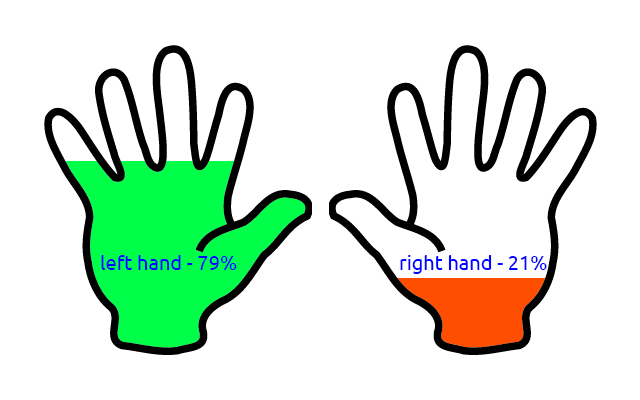How users interact with mobile devices
A closer look at the user experience with mobile devices
It is very important to understand for hardware and software developers how users interact with mobile devices. How do we know that the button is located on the side of the device or even a virtual button placed on the upper right side of the screen is as user-friendly as possible or not?
To answer these kinds of questions, we need to have a deep understanding of how users interact with mobile devices in real life.
Yes, there was a time when users had no choice but to get used to the devices and sometimes even spend some time studying their use. Fortunately, these times are long forgotten past!
And now, in our “user-centric” world, manufacturers and developers first need to understand the user, and then, on the basis of this research, create ergonomic both physical and digital products.
')
Today, mobile devices are so deeply integrated into our daily lives that people use their devices all the time; sitting, watching TV, walking, jogging and even talking on the phone.
Now let's see how exactly users interact with their phones. Based on the study www.uxmatters.com , which was attended by more than 1,300 people on the streets of New York and other US cities, we found the following.
Percentage of mobile device usage by interaction type

Only 19% of all users did not interact with the phone at the time of the study.
As expected, most people hold devices in one hand. But which one?
79% of all users hold a mobile device in their left hand

Here are some other facts about human interaction with mobile devices:
People love to use their phone with one hand (70%) and only 30% of all active users hold the phone with both hands. 90% of all who hold the phone with both hands, hold the phone vertically.
The two-handed prefer to use the phone while standing (45%), they also use it while sitting (35%) and although it is not easy for mortals to use the phone while walking, 21% of research participants still manage!
Now let's take a look at those who hold the phone with one hand.
We can conditionally divide 3 types of human interaction with a mobile device:
- active use - 56%;
- conversation - 44%;
- passive use (phone nearby, but not used) - 19%.
Looking at these statistics, it is easy to understand that the end of the world is near, because people are dependent on their smartphones and many other smart devices, which for many are already replacing traditional human communication. But if we are a mobile device manufacturer or software developer, this statistic sounds like music.
We can also find out that those people who are on the phone mostly prefer to do it while walking (55%), also standing (29%), but they clearly do not like to sit much (16%). I think this is because people are too busy to spend even seconds on talking on the phone.
Maybe the reason is the same, but people are actively using their mobile devices like phone calls:
walking - 46%, standing - 41% and sitting - 13%
We have almost the same picture with passive users:
walking - 70%, standing - 23% and sitting - 7%
I turned all these numbers over in order to find out what is the behavior of people sitting, standing and walking. So I learned that walking is the most common way to interact with phones (45%), followed by a standing position (36%) and lastly a sitting position (19%).
So, according to the results of the research, it is obvious that in any position we actively use our artificial friend more for pleasure and entertainment than for calls.
This study proves once again that in order to make the user's life easier, we must consider all the situations in which they find themselves and all the ways in which they interact with the product that we have created or plan to create.
Every product made for people must be produced with a deep understanding of human behavior.
We need to make sure that the button on the side of the phone is not made so that the user had to press it, and so that the human finger pressed it.
Original article on medium.com .
Source: https://habr.com/ru/post/204164/
All Articles